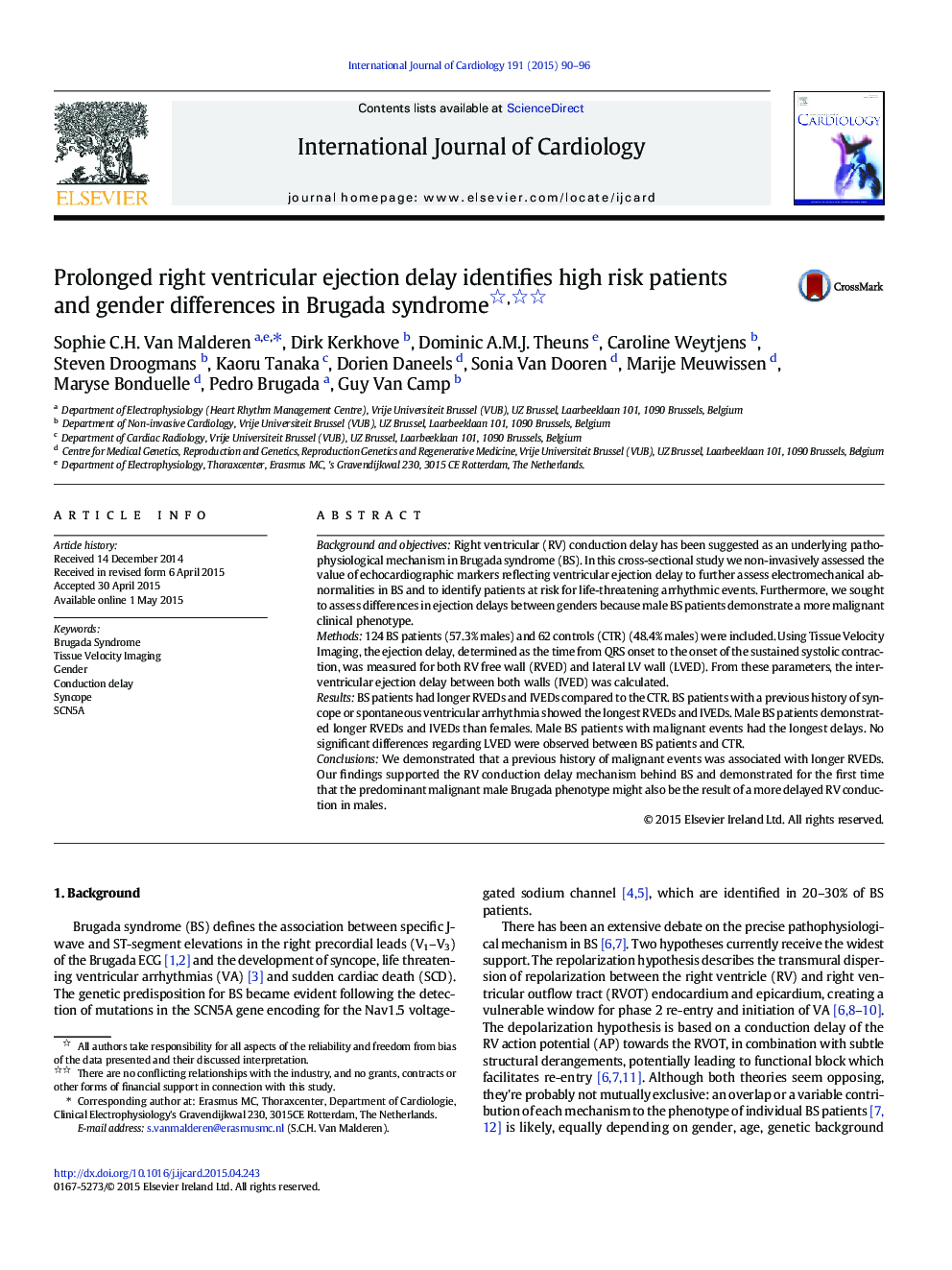| Article ID | Journal | Published Year | Pages | File Type |
|---|---|---|---|---|
| 5966822 | International Journal of Cardiology | 2015 | 7 Pages |
Background and objectivesRight ventricular (RV) conduction delay has been suggested as an underlying pathophysiological mechanism in Brugada syndrome (BS). In this cross-sectional study we non-invasively assessed the value of echocardiographic markers reflecting ventricular ejection delay to further assess electromechanical abnormalities in BS and to identify patients at risk for life-threatening arrhythmic events. Furthermore, we sought to assess differences in ejection delays between genders because male BS patients demonstrate a more malignant clinical phenotype.Methods124 BS patients (57.3% males) and 62 controls (CTR) (48.4% males) were included. Using Tissue Velocity Imaging, the ejection delay, determined as the time from QRS onset to the onset of the sustained systolic contraction, was measured for both RV free wall (RVED) and lateral LV wall (LVED). From these parameters, the interventricular ejection delay between both walls (IVED) was calculated.ResultsBS patients had longer RVEDs and IVEDs compared to the CTR. BS patients with a previous history of syncope or spontaneous ventricular arrhythmia showed the longest RVEDs and IVEDs. Male BS patients demonstrated longer RVEDs and IVEDs than females. Male BS patients with malignant events had the longest delays. No significant differences regarding LVED were observed between BS patients and CTR.ConclusionsWe demonstrated that a previous history of malignant events was associated with longer RVEDs. Our findings supported the RV conduction delay mechanism behind BS and demonstrated for the first time that the predominant malignant male Brugada phenotype might also be the result of a more delayed RV conduction in males.
